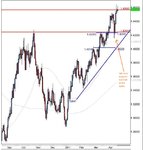DionysusToast
Legendary member
- Messages
- 5,965
- Likes
- 1,501
Brettus - at what point were you able to draw in that support line? Mid 2009, early 2010, later 2010 or have you put that on there recently (not sure how long you've been trading).
Are you saying that there is no other point on that chart that would have been considered support at any time in the past, without the benefit of hindsight? No support lines have been removed from this chart, just that one has been drawn on, perhaps a few years ago?
Are you saying that there is no other point on that chart that would have been considered support at any time in the past, without the benefit of hindsight? No support lines have been removed from this chart, just that one has been drawn on, perhaps a few years ago?


